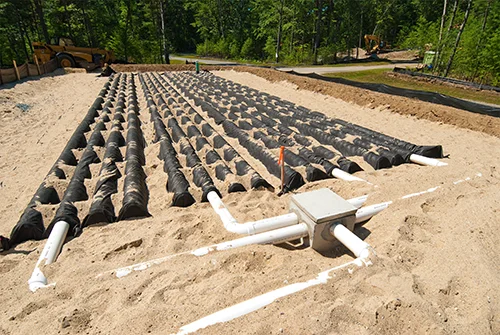
Design and Components
Drip distribution systems are designed to disperse effluent into the top few inches of soil using drip laterals. These systems utilize a network of small pipes with evenly spaced emitters that deliver wastewater directly to the soil, promoting even distribution and treatment.
How they work
Drip distribution systems work by transporting effluent from the septic tank to a distribution box. From the distribution box, the effluent is then delivered to the drip laterals, which distribute the wastewater evenly throughout the designated area. The effluent is applied at a slow and controlled rate, allowing for better treatment and absorption by the soil.
Pros and cons
Drip distribution systems offer several advantages, including efficient and uniform distribution of effluent, reduced risk of system failure due to clogging, and the ability to handle high wastewater flows. However, they may have higher installation costs compared to conventional systems and may require more specialized maintenance.
Cost to purchase and maintain
The cost of purchasing and installing a drip distribution system can vary depending on factors such as the size of the system, the number of drip laterals, soil conditions, and labor costs. Maintenance costs may be higher compared to conventional systems, as the drip laterals may need periodic flushing or replacement.
For more information, contact Morse Engineering and Construction for more information.
Source: aboutseptictanks.com
